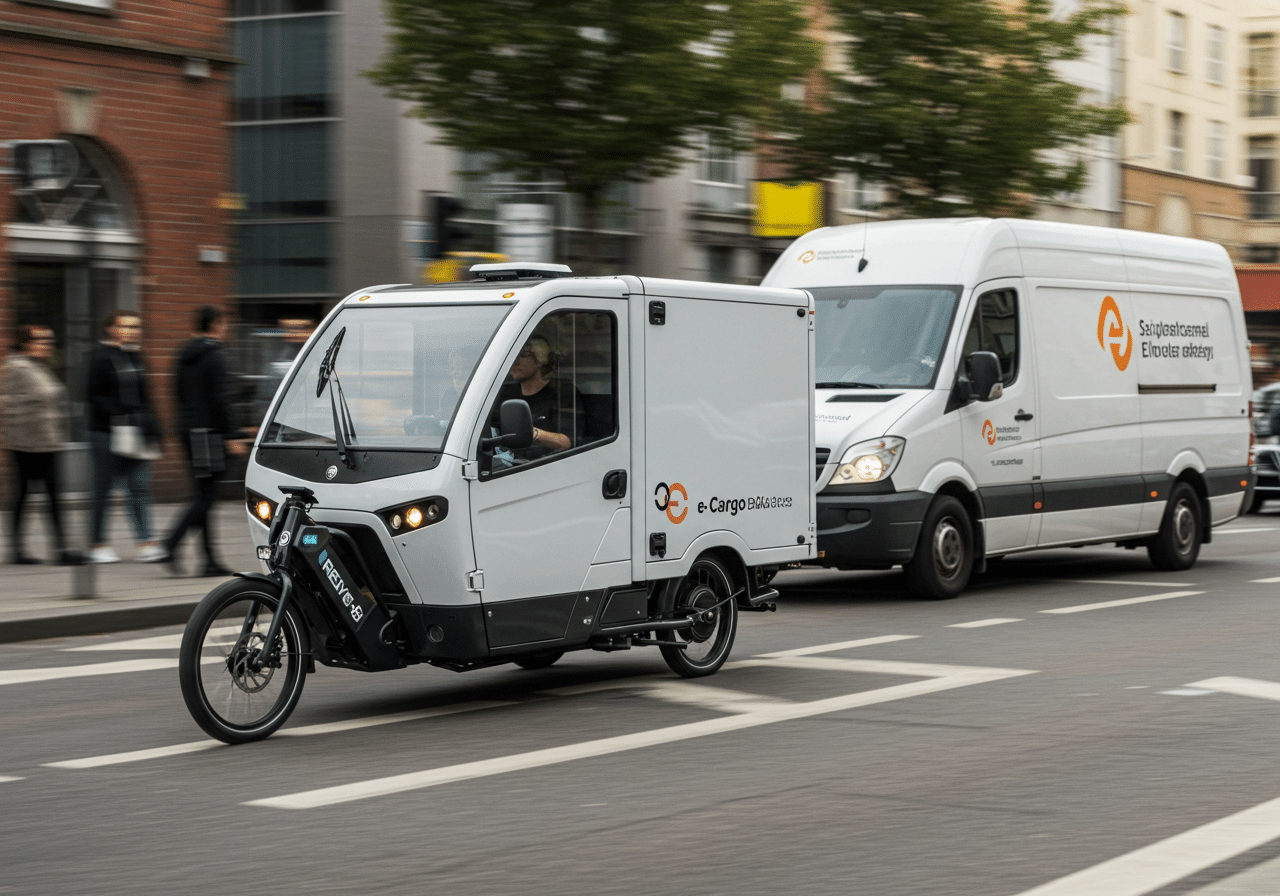The Evolution of Last-Mile Delivery
As urban logistics evolve, businesses are faced with a choice between traditional delivery vans and emerging eCargo Bikes. The increasing demand for efficiency, sustainability, and innovation in last-mile logistics has driven companies to explore alternative delivery solutions. But which option is better suited for the future of urban transportation? Let’s break it down.
Efficiency: Speed, Cost, and Performance
Efficiency is key in last-mile delivery. While delivery vans have long been the industry standard, they face increasing challenges such as congestion, high fuel costs, and strict emission regulations.
eCargo Bikes:
- Faster in congested areas: eCargo Bikes can navigate through traffic and take advantage of bike lanes, reducing delivery time.
- Lower operational costs: No fuel expenses, reduced maintenance costs, and lower insurance fees make them a cost-effective solution.
- Micro-hubs for optimization: Businesses can deploy micro-hubs to strategically distribute parcels, further improving delivery efficiency.
Vans:
- Higher capacity: Traditional vans can transport larger volumes in a single trip, making them suitable for bulk deliveries.
- Longer range: Vans can cover greater distances without requiring frequent stops for recharging or refueling.
- Adaptability: Some industries still rely on vans for large and heavy shipments where eCargo Bikes might not be viable.
Sustainability: The Future of Eco-Friendly Logistics
With growing environmental concerns, sustainability is a crucial factor in last-mile delivery decisions. Governments worldwide are enforcing stricter emission controls, and companies are expected to adopt greener solutions.
eCargo Bikes:
- Zero emissions: Unlike fuel-powered vans, eCargo Bikes produce no greenhouse gas emissions.
- Lower carbon footprint: They contribute to reduced urban pollution and help cities meet their climate goals.
- Health benefits: Encouraging active transportation leads to healthier urban environments.
Vans:
- EV adoption: Electric vans are entering the market, offering a cleaner alternative to traditional gas or diesel-powered models.
- Long-term sustainability improvements: Hybrid and alternative fuel technologies may help vans reduce their environmental impact.
Innovation and AI Integration in Last-Mile Delivery
The logistics industry is witnessing rapid innovation, with AI-powered route optimization, automated tracking, and smart logistics solutions reshaping last-mile delivery.
eCargo Bikes:
- AI-driven delivery networks: Companies are using AI to optimize delivery routes and reduce delays.
- Fleet management technology: Smart tracking systems ensure real-time delivery updates.
- Integration with urban planning: Cities are investing in infrastructure to support widespread eCargo Bike adoption.
Vans:
- AI-powered logistics systems: Predictive analytics help optimize routes, reduce fuel consumption, and improve efficiency.
- Smart storage solutions: Automated loading and unloading processes enhance delivery speed.
- Connected vehicle technology: Enhancing safety and efficiency through real-time data.
Challenges in Implementing eCargo Bikes vs. Vans
While eCargo Bikes offer numerous advantages, they also present challenges in certain delivery scenarios:
- Limited cargo capacity: Unlike vans, eCargo Bikes may not be suitable for transporting oversized or bulk shipments.
- Weather dependency: Harsh weather conditions can impact bike deliveries more than enclosed vans.
- Regulatory barriers: Some cities have restrictions on cargo bike usage in specific areas.
For delivery vans:
- Urban congestion: Traffic delays and limited parking spaces increase delivery time and cost.
- Higher emissions: Even with electric alternatives, vans contribute more emissions than bikes.
- Rising fuel prices: Operating costs continue to escalate.
The Future of Last-Mile Delivery: A Hybrid Approach
A future where both eCargo Bikes and vans coexist is likely the best approach for last-mile logistics. Businesses can integrate micro-hubs with AI-driven eCargo Bike fleets for urban deliveries while utilizing vans for long-distance and bulk shipments.
Companies that prioritize innovation, efficiency, and sustainability will lead the way in optimizing urban logistics.
Conclusion
Both eCargo Bikes and vans have distinct advantages and challenges in last-mile delivery. The choice between them depends on factors such as delivery volume, urban infrastructure, and environmental goals. As technology advances and cities embrace eco-friendly solutions, eCargo Bikes will play an increasingly vital role in the future of last-mile delivery.
For businesses looking to enhance their urban logistics strategy, adopting a balanced mix of eCargo Bikes and vans—leveraging AI and innovation—is the key to staying ahead in a rapidly evolving industry.

